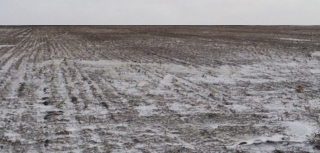"Is grass-fed beef really better for you, the animal and the planet?"
Below is my response to an article published in The Washington Post titled: Is grass-fed beef really better for you, the animal and the planet? You will need to read the article to properly understand my response.
The Popular Anti-Science War on Grass-Fed Meat Continues
Typical of most articles mixing ranching with nutrition, this one is mostly psychobabble. In fact, Tamar Haspel’s article is classic in that respect. It leads nowhere.
For instance, a big red flag pops up anytime the Omega-3 discussion refers to just the quantity of Omega-3 in any food product. That’s because the “proper quantity” of Omega-3 in any food product is only determined by its “balance” with Omega-6. Both of these fatty acid families are essential, which means our bodies get them from food. They are commonly referred to as essential fatty acids (EFAs). Grain-fed cattle have Omega-6 to Omega-3 ratios of about 15:1. Chronic diseases in laboratory mice are detectable when the ratio exceeds 4:1. Most Americans have balances of from 10:1 to 20:1. Grass-fed meats hover around 1:1, the “perfect balance.” The “perfect balance” comes from the green leaf, the foundation food for all animal life. It’s only the ratio that defines whether or not there is an Omega-3 deficiency.
All of the popular grains have EFA ratios of from 10:1 to 30:1. They provide some Omega-3 but huge quantities of Omega-6. To make matters worse, the higher levels of Omega-6 tend to block the body’s absorption of Omega-3. Grains are also high glycemic (think sugar), low in overall nutrients and even host antinutrients, and are not highly digestible. Foods like kale, broccoli, spinach, etc. have EFA ratios that are usually higher in Omega-3 than Omega-6, albeit with moderate quantities of both. Kale, broccoli, spinach are low glycemic and nutrient dense. Huge positives for human health. Grass-fed meats have perfect EFA ratios, are zero glycemic, nutrient dense, and easily digested. Therefore grass-fed meats are the perfect health food!
When the environmental impact of grain-fed livestock (feedlots) versus grass-fed livestock is discussed, novices get really confused. That’s because they assume farming is natural and livestock on pastures is not! Good Grief! Man invented farming and the eating of seeds (grain) from grass plants. Few activities are more disruptive to the natural way than ripping open the soils and leaving them fallow for months of the year.

Typical Midwest wheat field in the winter.
Additionally, the water and resources required for farming is huge. On the other hand ruminants on grassland is 100% natural and the requirements for water and resources are much smaller. In case you miss the point here, take note that the current feedlot model relies on grain farming. Compared to any form of farming, livestock on pastures is better for protecting the planet’s environment.
A couple of weeks ago I wrote an article titled “The Insane War on Grass-Fed Beef” which specifically addressed the many misguided common-knowledge points Tamar Haspel repeated in her article. In spite of my puny efforts the volume of negative material that keeps pouring forth from the mainstream makes me feel like I’m wasting my time. The mob insists on believing in myths. Science be damned.
Ted Slanker
February 24, 2015




